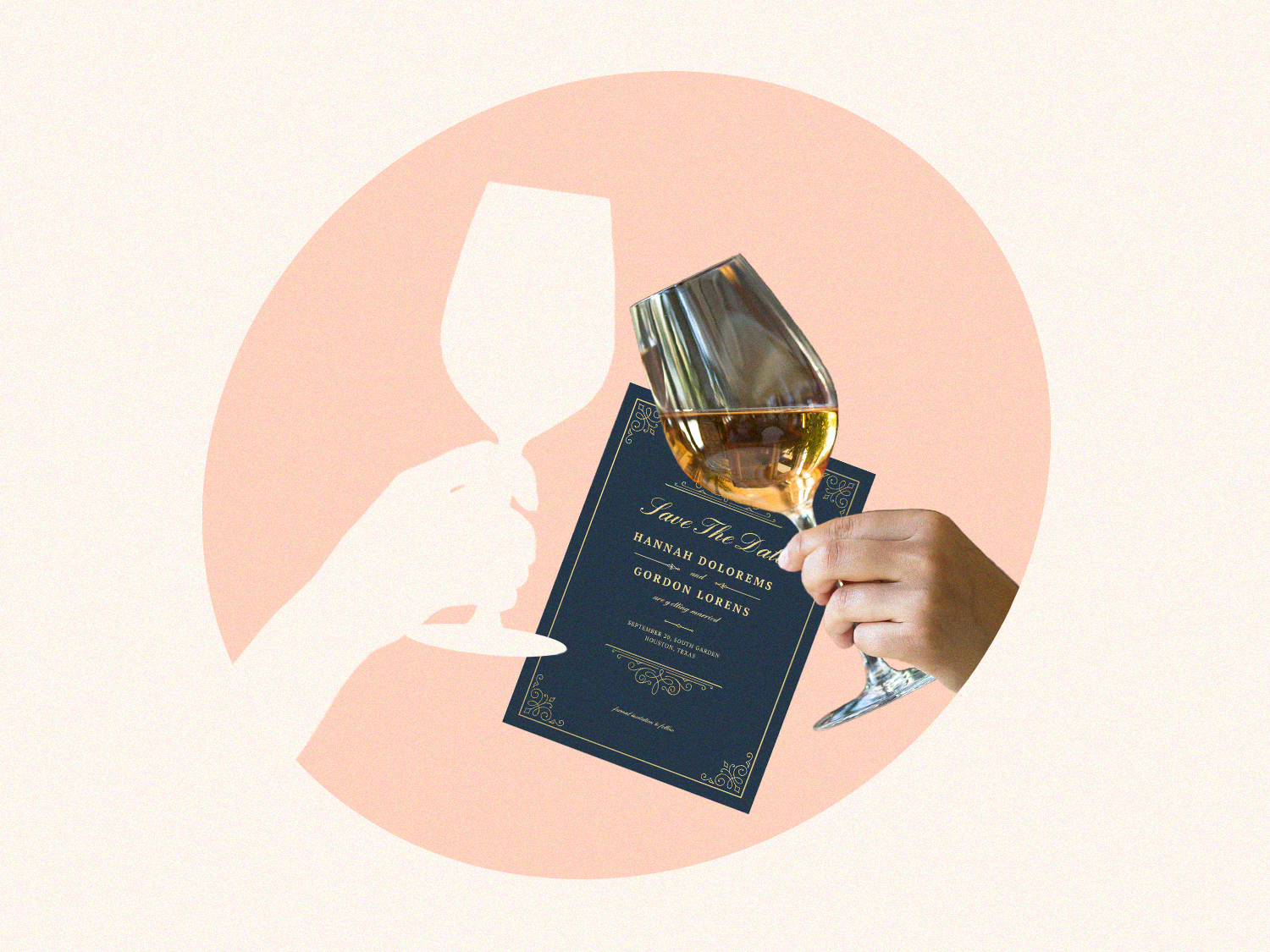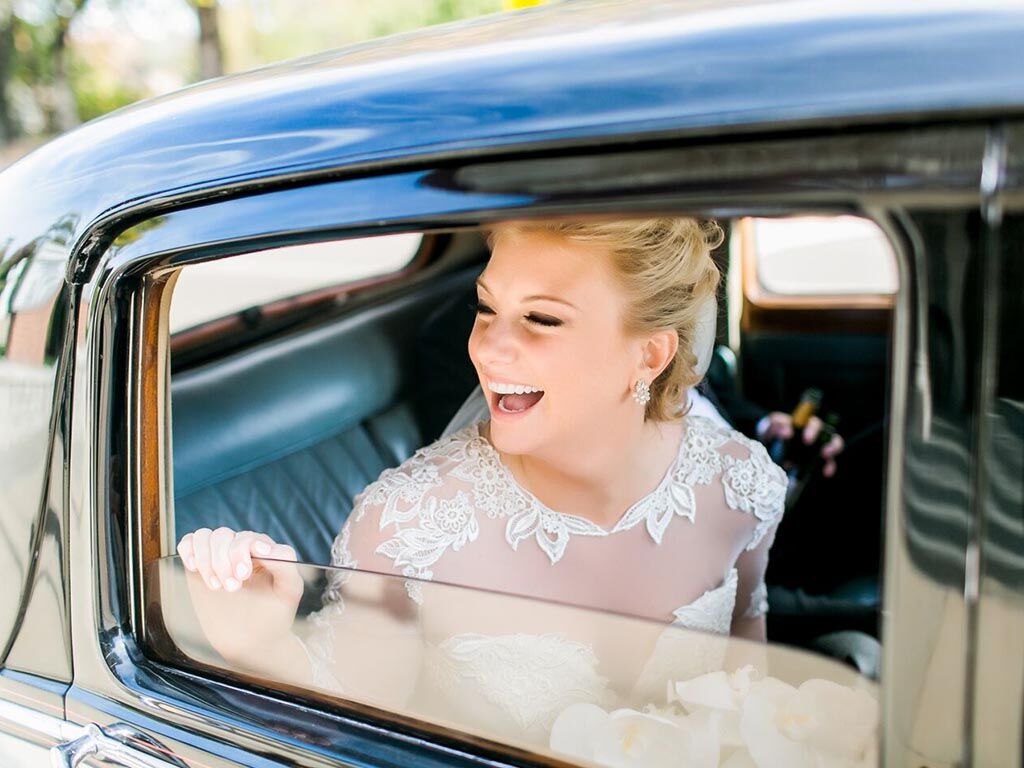Flower Girl 101: Everything You Need to Know
What's the flower girl's primary role? To be darling, of course. But rosy cheeks and ribbons aside, her cruise down the aisle requires a bit of planning and preparation. Having a flower girl is optional, but it's a nice way to make your favorite little one feel like a part of your special day.
From understanding the meaning of a flower girl to traditional etiquette, we're answering all your burning questions: How do you choose the wedding flower girl? Why does the flower girl throw petals? And what else does a flower girl do during the ceremony?
Read on for everything you need to know about flower girl duties!
In this article:
- What is a flower girl?
- Do flower girls have any other duties?
- Does a wedding need a flower girl?
- Who gets chosen as the flower girl?
- Can there be more than one flower girl?
- What else should couples and parents know?
What is a flower girl?
A flower girl is a wedding role typically given to young girls to add a little extra charm to the ceremony! Traditionally, the flower girl's age is between three and eight years old, but the couple can ask anyone they like. She walks down the aisle ahead of the bride, scattering flowers along the way.
In ancient Greek and Roman times—when many historians believe the tradition began—flower girls tossed grains and herbs to symbolize fertility or carried garlic garlands to protect against evil spirits. During the Victorian era, flower girls wore white dresses (sometimes even a replica of the bride's gown) and carried flower baskets or hoops, as a symbol of infinite love.
Today, incorporating a flower girl into the wedding is a sweet way to include young loved ones, adding a touch of symbolism and whimsy to the couple's big day.
Do flower girls have any other duties?
Throwing flowers during the wedding processional is the main (and usually only) flower girl responsibility. After she completes her walk down the aisle, she can either stand with the wedding party at the altar or sit with her parents toward the front of the ceremony, so she can focus on them and be encouraged by their smiles of reassurance.
Once your flower girl has completed her duties, it's a good idea to have toys or games to keep her occupied during the ceremony. This is especially true for toddlers who will be seated with their parents after reaching the altar. Have snacks on hand to keep mouths full, and consider keeping a tablet or phone nearby for entertainment.
Finally, if your flower girl isn't too shy, she will be announced in the wedding party reception entrances. (Even if the couple is having an adults-only wedding, it's good wedding etiquette to invite all wedding party members to the reception and the flower girl's parents won't have the burden of finding a babysitter.)
Does a wedding need a flower girl?
Though it's traditional to have a flower girl and certainly a nice way to make smaller family members feel included, not every wedding needs one. Maybe the couple doesn't have any relatives or children of dear friends who are the appropriate age. Perhaps the ceremony is intimate, with just the closest family and friends in attendance. Or maybe having a flower girl just doesn't fit the couple's vibe. Whatever the reason, if you're planning a wedding and wondering, "Do you have to have a flower girl?" the answer is no.
That being said, it's good to keep in mind that "flower girls" aren't limited to just flowers — these little ladies can throw seeds or confetti, blow bubbles, hold colorful balloons or a decorative wand, carry a sign or a mini bouquet or even lead a furry friend down the aisle. In fact, some wedding venues restrict people from throwing anything on the aisle, including real or faux petals, so it's good to have a backup idea on hand, just in case. But if the couple wants to include a young girl but flowers aren't the aesthetic they're going for, they don't have to discount the tradition entirely.



Who gets chosen as the flower girl?
When trying to decide who should be the wedding flower girl, the to-be-weds should pick someone they are close to, like the child of a family member or friend. They should have a solid relationship with their choice to ensure the girl feels comfortable helping them on their special day. If they don't have the option of choosing a niece, a best friend's child, a younger sibling or a daughter of their own? Think outside the box! We love the idea of surprising guests with the unexpected by having a flower boy, a petal patrol of adults or even a furry best friend walk down the aisle.
Before making a final decision, the pair should speak with the child or adult to see if they're interested in the role. Have these conversations with people you're seriously considering to allow them to decide if they want to accept the tasks associated with the job. The child's parents may be overjoyed with the prospect of them being in your wedding party, but the child might not like being in the spotlight. By talking with the child before making your proposal, you give the agency to make their own decision. When ready to make the request official, a flower girl proposal gift—like an engraved necklace or stuffed animal—is a great way to make the child feel special and show genuine appreciation for taking on the task.
Can there be more than one flower girl?
If the betrothed have big families or just too many candidates to choose from, they should definitely have more than one flower girl. Never underestimate the power of the buddy system! We love the idea of having two flower girls or pairing up the ring bearer and flower girl so that they can proceed together, side by side. Partnering will give them added confidence. One of the parents walking down the aisle with the flower girl will help the little attendant feel secure too. Younger children often struggle to understand the weight of their roles, so having parents close at hand will keep the risk of a tantrum to a minimum.
Older flower girls or junior bridesmaids can assist with other duties besides throwing petals, like holding the wedding dress train or pulling the younger flower girl(s) in an adorable wagon.
When it comes to how many flower girls there should be, we recommend sticking with three or four flower girls at most, so the wedding party isn't too big.
What else should couples and parents know?
If a couple wants to honor a young child with the flower girl job, it's important to talk about the responsibilities with the parents first. The flower girl's parents will have a lot to do before the wedding, from explaining the flower girl's duties to their little one to paying for their child's outfit. (As a nice gesture, the to-be-weds might offer to cover the costs; an adult flower girl is responsible for her own expenses.)
Also, the family will have to attend the prewedding festivities, like the bridal shower and rehearsal dinner, and arrive early on the wedding day. It's important to foster a good relationship with the flower girl's parents early on since they are putting in a lot of time and money on their child's behalf. If possible, arrange to have the flower girl attend the prewedding events as well to boost her comfort level around the other wedding party attendants. Seeing friendly, familiar faces on the big day will help to ease any anxiety.
Lastly, keep it all in perspective. Children always bring some level of spontaneity and unpredictability to wedding ceremonies, and even if things don't go quite as planned, it could end up resulting in an adorable moment.
Additional reporting by Shyla Watson





















